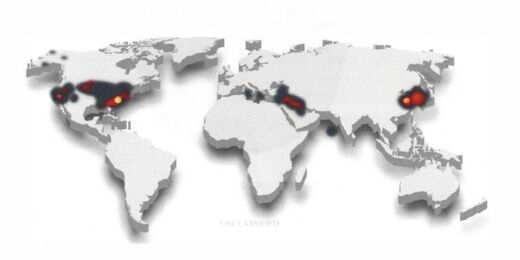In its 'Evaluation of the DoD's Actions Regarding UAP,' the Department of Defense Office of Inspector General (DoD OIG) identified a risk to military forces and national security due to the DoD's lack of a comprehensive and coordinated approach to addressing UAP.
Answering in response to a question posed by Liberation Times as to how many recommendations have been implemented to date, a DoD OIG spokesperson commented:
'One has been fully implemented the other ten are still being implemented.'The lack of apparent urgency when faced with potential risks has been met with disbelief among Liberation Times sources. DoD and intelligence sources have told Liberation Times that the news represents an "utter failure".
Liberation Times contacted the Joint Chiefs of Staff, asking whether Americans could sleep comfortably following the conclusion of the alarming report. No response has been received.
The report also highlighted a lack of response by the United States Air Force to its recommendations - noting that its response, 'did not provide the specific actions that the Air Force would take and the dates for those actions'
However, a DoD OIG spokesperson told Liberation Times that this has now been resolved:
"We can confirm the Air Force provided us with actions and a timeline."The Joint Chiefs of Staff is the only component within the Evaluation report, publicly released on 25 January, to have implemented its recommendation.
The DoD leaders that have not implemented recommendations are:
- Ronald Moultrie, the Under Secretary of Defense for Intelligence and Security in coordination with the All-domain Anomaly Resolution Office (AARO)
- Christine Wormuth, Secretary of the Army
- Carlos Del Toro, Secretary of the Navy
- Frank Kendall, Secretary of the Air Force
Meanwhile, Wormuth, Del Toro and Kendall have all been recommended to:
- Integrate existing intelligence, counterintelligence, and force protection policies and procedures
- Integrate procedures for coordinating with geographic combatant commands
- Incorporate roles, responsibilities, and requirements for the Military Services and their respective Military Department Counterintelligence Organizations.
The report stated that:
'DoD Components have largely excluded geographic combatant commands, which are responsible for detecting, deterring, and preventing threats and attacks against the United States and its territories, possessions, and bases in their respective areas of responsibility, in developing UAP policies and procedures.'In November 2023, investigation journalist Jeremy Corbell told Liberation Times that United States Central Command (CENTCOM) has been dealing with this issue for 15 years and that an alarming uptick in sightings since 2021 is causing frustration among DoD insiders due to a lack of authority to deal with intrusions within the proximity of coalition forces.
Notably, three U.S. troops were killed and dozens injured in a recent drone attack on a base near Jordan's border with Syria. Quick detection and identification of unknowns in the region has become increasingly important, so that threats can be categorized.
In October 2023, at a press event, when asked whether the AARO was working with all the commands, its former Director, Dr Sean Kirkpatrick stated:
'We are predominantly working with -- the short answer is yes, we will work with all of the commands. We send guidance out to all of the commands. But we are really involved with NORTHCOM, INDOPACOM, CENTCOM right now.'At that event, Dr Kirkpatrick, when asked about data gaps, neglected to mention geographic combatant commands, despite the report having been published two months earlier.
In the AARO's latest UAP heat map, the area of Western Europe showed few reports, despite substantial U.S. military presence in the region and the risk that Russian surveillance activities could be mistaken for UAP.
An earlier UAP heatmap presented by Dr Kirkpatrick to the Senate's Subcommittee On Emerging Threats and Capabilities in April 2023 also showed few sightings in Western Europe. Dr Kirkpatrick told that Subcommittee:
"What you'll notice is that there is a heavy collection bias, both in altitude and geographic location. That's where all of our sensors exist; that's where our training ranges are, that's where our operational ranges are, that's where all of our platforms are."The DoD OIG report now casts doubts on Dr Kirkpatrick's framing of that map following its finding that geographic combatant commands were excluded from UAP processes.
In the Subcommittee, Dr Kirkpatrick added:
"My relationship with the commands are very good."The DoD OIG report noted that the Joint Staff have now 'issued guidance to the geographic combatant commanders on unidentified anomalous phenomena detection, reporting, collection, analysis, and identification within their area of responsibility.'
In its response to recommendations, Ronald Moultrie stated, 'AARO is developing policy guidance, including recently released General Administration guidance through the Joint Staff to the combatant commands, to delineate UAP roles, responsibilities, requirements, and coordination procedures.'
Although the recommendations provided to the AARO and Moultrie have not been implemented, it is not understood whether the specific delineation has been provided through the Joint Staff.




Reader Comments
to our Newsletter